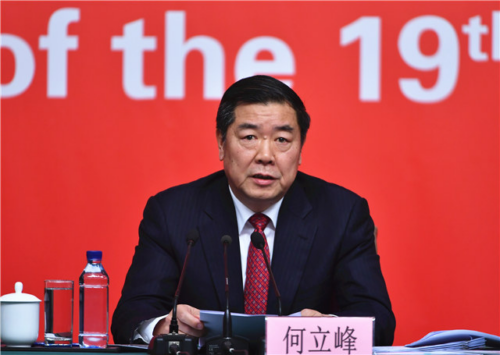China’s Arctic ambitions and Russian ties stoke NATO fears
Polar sea ice is melting at an unprecedented rate, potentially freeing up access to faster shipping routes and vast natural resources in the Arctic. China has its eyes on those lucrative opportunities through Russia.

China is expanding its footprint in the Arctic through Russian ice and waters as part of its strategy to become a “polar great power” (极地强国) by 2030, according to a new report by the U.S.-based think tank Center for Strategic and International Studies (CSIS).
Climate change has caused Arctic sea ice to melt at an unprecedented rate, dramatically altering not only the physical landscape of the region but also its geopolitics. The level of sea ice will decline at a pace of about 13% per decade, according to 2022 NASA predictions. In 2021, the United Nations Intergovernmental Panel on Climate Change (IPCC) estimated with “high confidence” that the Arctic Ocean will likely become ice-free by 2050.
Aside from direct environmental impacts, the rapid disappearance of the polar sea ice has transformed the Arctic Ocean into a new geopolitical frontier. Without impeding blocks of ice, states will have easier access to the Arctic’s vast reservoirs of key energy resources like oil and coal, as well as critical materials such as uranium and rare earth minerals that are needed for a green energy transition. Those in command of the Arctic would also have access to lucrative maritime shipping routes that could cut transit times in half.
Beijing has set its sights on expanding its interests in the region over the last decade. China published its first-ever Arctic strategy in 2018, which laid out its “polar great power” ambitions. In June 2017, President Xí Jìnpíng 习近平 named the Arctic as one of the “blue economic passages” under the Belt and Road Initiative, and has repeated China’s goal to develop lucrative Arctic shipping lanes into a new “Polar Silk Road.”
Until now, Beijing’s projects in the region have largely been scientific and commercial ventures, which Chinese officials claim give it the “right to speak” on Arctic affairs. China is not one of the eight Arctic states, a title that belongs to Canada, Denmark, Finland, Iceland, Norway, Sweden, Russia, and the United States. But since 2013, China has become one of the many non-Arctic countries that have been admitted as observers of the Arctic Council. They include France, Germany, Italy, Spain, Poland, the Netherlands, the United Kingdom, Switzerland, Japan, South Korea, Singapore, and India.
However, a number of Chinese officials have voiced frustration with “existing Arctic governance mechanisms,” according to a Brookings Institute report published in 2021: “Several Chinese texts indicate frustration with Arctic mechanisms and concern that the country will be excluded from the region’s resources.” But Chinese companies are actually involved in a very small share of those types of projects. Most of their activities are focused on exploration that is heavily concentrated in Canada.
China’s limited operations in the Arctic are under scrutiny for ties to its military
Despite Beijing’s ambitions, China’s reach in the Arctic has remained limited, even in Russian territory. While China’s current projects are largely for civilian purposes, many Arctic states are concerned that they may be linked to Beijing’s military objectives.
China currently operates two permanent research stations in the polar north: the Yellow River Station in Ny-Ålesund, a small town in Svalbard, Norway, and the China Iceland Arctic Research Observatory (CIAO), located in the northern part of Iceland. Both sites are focused on advancing scientific knowledge, such as atmospheric, space, and marine observations.
However, several Chinese efforts have been blocked or rescinded by Arctic states for national security reasons over the past decade. In 2020, the Swedish Space Corporation (SSC) decided not to renew its contracts with China to manage the Esrange Space Center, China’s first overseas satellite ground station, near the northern Swedish mining town of Kiruna, over suspected ties to the People’s Liberation Army (PLA).
In 2017, similar plans for another Chinese-operated research facility and satellite ground station in Nuuk, Greenland, were denied by Danish authorities, amid U.S.-led efforts to phase China out of the region. (Similar plans to set up a joint research center were also frozen by Finland in 2019.) Meanwhile, the European Commission plans to set up a representative office in Nuuk to “show its presence in the Arctic.”
Russia is China’s “gateway to the Arctic”
Since China holds no official claim to the Arctic, it relies on partnerships with other states that have sovereign jurisdiction to carry out its interests. As many of those ties come under mounting geopolitical strain, China is looking to Russia as a “gateway to the Arctic.”
Given its vast size, Russia is in control of a large swath of the Arctic. In particular, Moscow is in control of the lucrative Northern Sea Route (NSR), which extends from the Kara Sea to the Bering Strait along Russia’s 24,140-kilometer (15,000-mile) Arctic coastline. More than 90% of China’s international trade transportation comes from shipping, and “the opening of Arctic routes would reduce maritime transportation costs as well as risks in other transportation routes, alleviate China’s energy shortage, and make China a hub for transporting Arctic energy to the world,” according to a joint report by the U.S.-based RAND Corporation and the Swedish Defense Research Agency (Totalförsvarets Forskningsinstitut, or FOI).
The NSR currently pales in comparison with other global shipping routes: Total Arctic shipping last year only amounted to about one day of traffic through the U.S.-controlled Suez Canal. However, transit times across the Northern Sea Route have shortened due to lighter ice conditions over the past decade. Moscow has also stated its intention to develop infrastructure and business opportunities along the NSR to maintain its power in the Arctic region, and has created a joint working body with Beijing to carry out such projects.
China news, weekly.
Sign up for The China Project’s weekly newsletter, our free roundup of the most important China stories.
NATO states fear China’s deepening ties with Russia in the Arctic
Russia was initially reluctant to grant China more power in Arctic territory — Moscow had openly lobbied against Beijing’s application to become an observer state of the Arctic Council. But an isolated Russia, which has been shunned by fellow Arctic state members due to its war in Ukraine, is increasingly dependent on China for political and economic support.
Russia’s war in Ukraine has raised concern in the West over Beijing’s alignment with Moscow. On March 3, 2022 — eight days after Russia’s invasion of Ukraine — seven of eight countries suspended their participation in the Russian-chaired Arctic Council for Moscow’s “flagrant violation” of sovereignty and territorial integrity. Finland’s recent accession to NATO, and Sweden’s push for membership in the U.S.-led security alliance, will leave Russia as the only non-NATO Arctic Council member. NATO Secretary General Jens Stoltenberg also urged the organization to boost its presence in the region in order to counter Chinese and Russian interests.
But China’s special envoy to the Arctic, Gāo Fēng 高风, said in October 2022 that China will not support Norway’s chairmanship of the Arctic Council if Russia remains banned.
Earlier that month, the U.S. urged for the need to “effectively compete and manage tensions” in its updated Arctic strategy, which outlines the U.S. agenda over the next decade. It specifically named China’s aim “to increase its influence in the Arctic through an expanded slate of economic, diplomatic, scientific, and military activities” and “its intention to play a larger role in shaping regional governance.”






